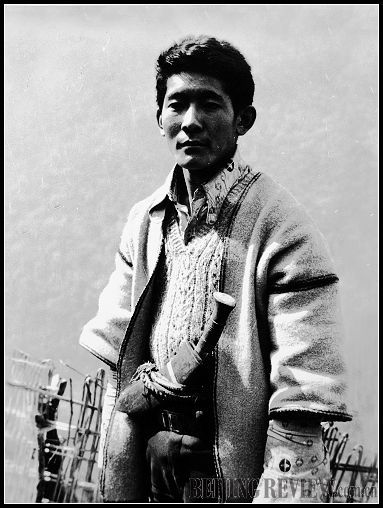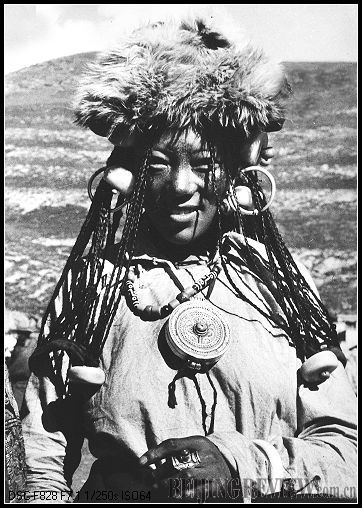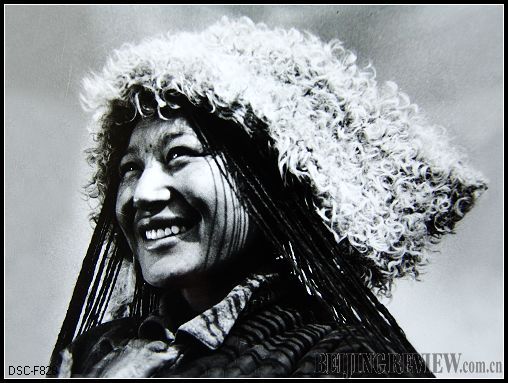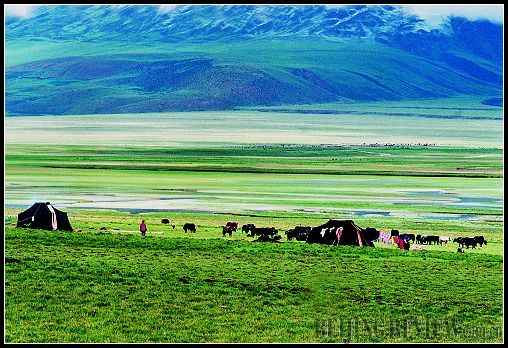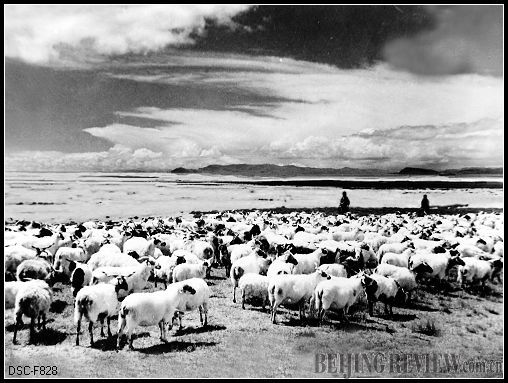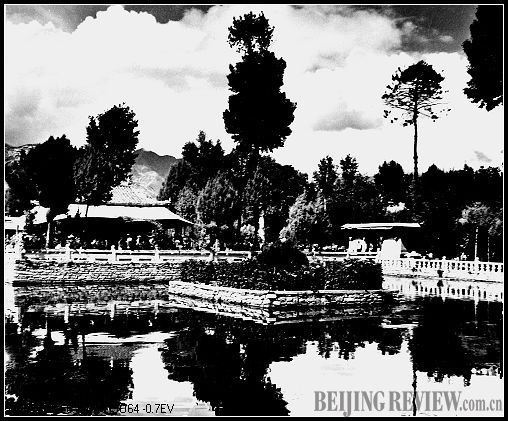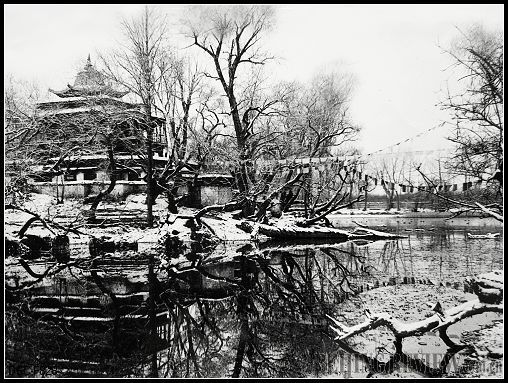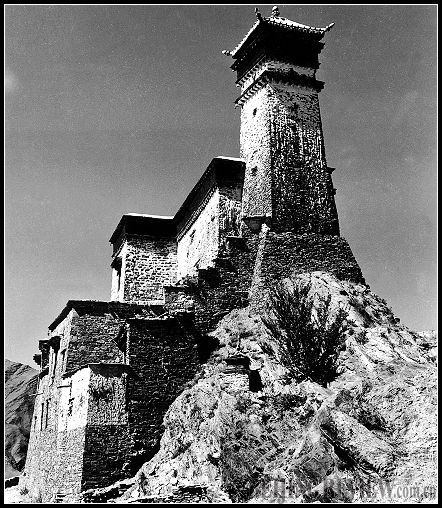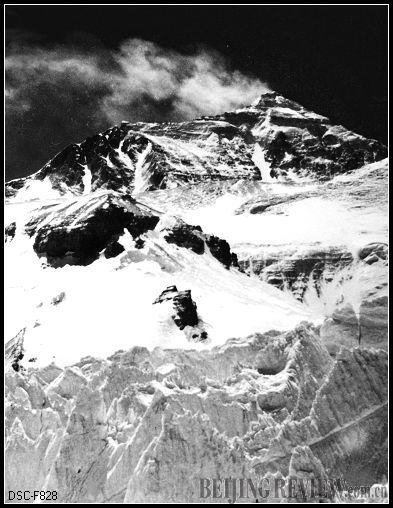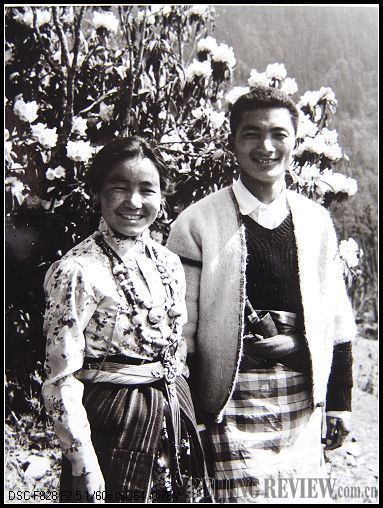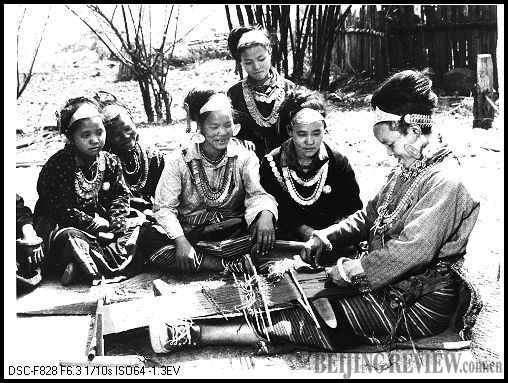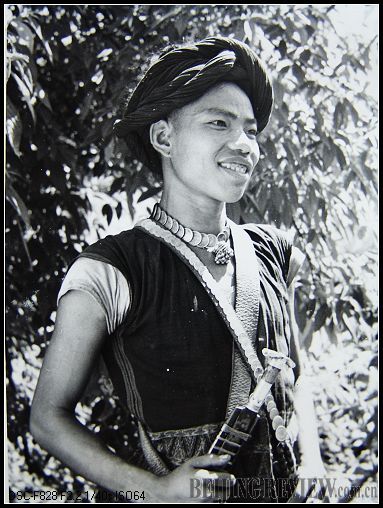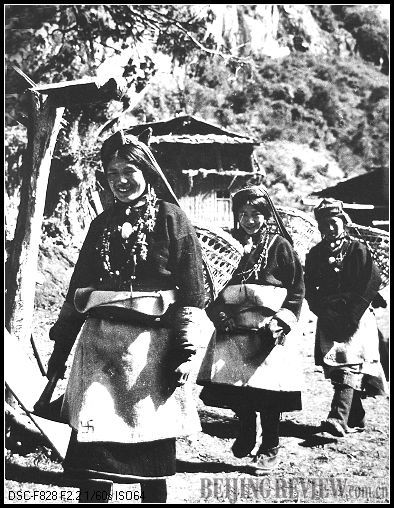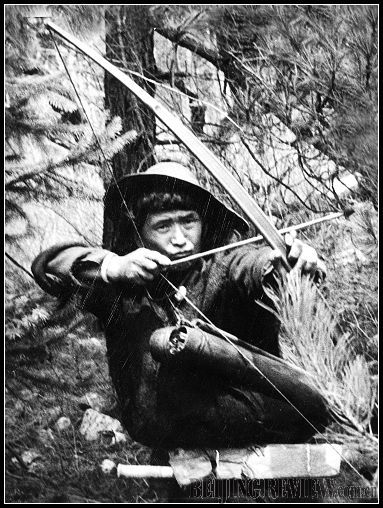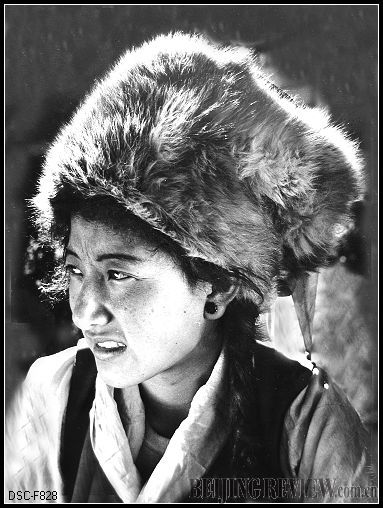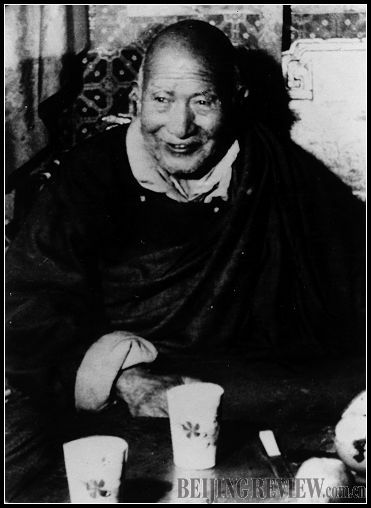Qamba Puncog
Qamba Puncog is a Sharpa farmer in Shobogang Village at Zham port in south Tibet. "Sharpa", refering to "Oriental people" in Tibetan, are found in the Sino-Nepalese border area. There are over 200 households, with 1,800 people. They have their own language without script but know Tibetan language and script. Their names are similar to those of Tibetan people. To seek for auspiciousness and security, they are often named after the names of gods
A Shepherdess
In the late Ming Dynasty (1368-1644), it became the station of the cavalry army of the Gushri Khan of the Khoshut Mongol tribe and the production base of the family members of the soldiers for herding cattle and sheep. Lots of Mongolian cavalrymen married Tibetan women. Hence, the herders there mostly have Mongolian lineage. Nowadays, this beautiful shepherdess might be a descendant of a cavalryman (1960)
Living a Happy Life
She was the daughter of a slave of the Womatingke Tribe in Nagqu County. From seven years old, she herded sheep for the slave-owner and did unpaid corvee. After the Democratic Reform in Tibet, her family was given cattle, sheep and tents and joined the mutual-support group, gaining rapid development in animal husbandry and leading an increasingly happy life (1961)
Changtang Grassland
Changtang Grassland (1990)
Nam Co Lake
The Nam Co Lake, "Heavenly Lake" in Tibetan, is located in northwest Damxung County. With an altitude of 4,718 meters, it is the highest and largest salt lake of the region. In the tertiary era, the Nam Co emerged in a huge basin caused by crustal movement in the Himalayas. Running over 30 km from north to south and over 70 km from east to west, the Nam Co covers a total area of more than 1,940 square km (1961)
The Mid-Lake Pavilion
The Mid-Lake Pavilion in Norbu Lingka Park in Tibet (1957)
Dragon King Pond
Dragon King Pond in winter (1961)
Yungbolhakang Palace
The first palace in Tibet: Yungbolhakang Palace (1960)
Qomolangma
With an altitude of 8,844.43 meters, Qomolangma is the highest peak in the world, towering among the Himalayan Mountains. It is located at the common boundary between China and Nepal (1960)
A Sharpa Couple
A young Sharpa couple (1974)
Brocade Weaving
A Deng woman weaving brocade (1962)
Deng People
The Deng people, living in the dense forests of Zayu, Nyingchi, haven't been identified as an ethnic group by the State. They speak a language belonging to the Burmese branch of Sino-Tibetan language without written form. The costumes of Deng people are similar to those of the Dai people in Yunnan. Men wear a head cloth or bamboo hat, sleeveless robe and pants. Women wear short coat which only reach the chest and long skirts. The material is the flax woven by Deng women. Girls tie their hairs behind the head and wear silver headgear and huge round earrings or trumpet-shaped drumhead as well as necklace with strings of beads. Since it is very hot there, children often play naked. Little girls only tie a rope around their waist and hang a silver or copper spoon on the middle of the rope in front.
The Deng people are mainly distributed in the Equ, Zayu Qu, Gedo Qu and Doli Qu drainage areas in Lower Zayu Township, Zayu County. They number about 1,500, accounting for 1 percent of the total population in Tibet. They mainly go in for agriculture, planting paddy, corn and finger millet as well as such vegetable as cayenne, taro and legume and breeding livestock.
Moinba Women
Moinba women
A Lhoba Hunter
A Lhoba hunter (1963)
Rongsiyuan
Rongsiyuan is a famous folk singer in Qamdo Prefecture in Tibet. She joined the People's Liberation Army (PLA) in the 1960s and became a singer of the Cultural and Performance Troupe of the Tibet Military Area Command and Zhanqi Cultural and Performance Troupe of the PLA Chengdu Military Area Command. The famous singer Han Hong is her daughter
A Tibetan Doctor
Famous Tibetan doctor Qoiba Chinro Norbu (1961)
